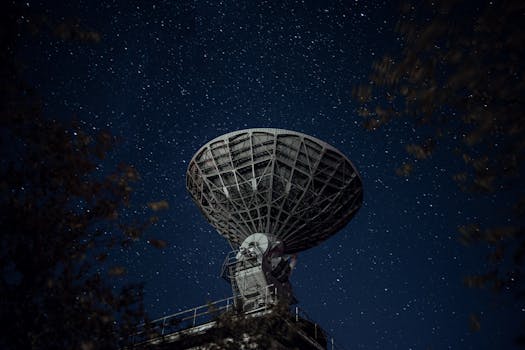
The Rise of Mega-Constellations: Latest Updates in Satellite Telecommunications
The Rise of Mega-Constellations: Latest Updates in Satellite Telecommunications. The concept of mega-constellations has been gaining significant attention in recent years, particularly in the field of satellite telecommunications. A mega-constellation refers to a large group of satellites that work together to provide global coverage and offer a range of services, including internet connectivity, navigation, and Earth observation. In this article, we will delve into the latest updates on mega-constellations and their impact on the satellite telecommunications industry.
Introduction to Mega-Constellations
Mega-constellations are designed to provide a new level of connectivity and service provision, enabling the delivery of high-speed internet, low-latency communications, and other services to remote and underserved areas. The idea of mega-constellations is not new, but recent advancements in space technology and the decreasing cost of launching satellites have made it more feasible to deploy large constellations of satellites. Companies such as SpaceX, OneWeb, and Amazon’s Kuiper Systems are leading the charge in developing mega-constellations, with plans to launch thousands of satellites into low Earth orbit (LEO) over the next few years.
Benefits of Mega-Constellations
The benefits of mega-constellations are numerous, and they have the potential to revolutionize the way we communicate and access information. Some of the key benefits include:
Global coverage: Mega-constellations can provide global coverage, enabling the delivery of services to remote and underserved areas. This can help to bridge the digital divide and provide equal access to information and opportunities.
High-speed internet: Mega-constellations can offer high-speed internet connectivity, enabling the delivery of data-intensive services such as video streaming and online gaming.
Low latency: Mega-constellations can provide low-latency communications, enabling real-time communication and data transfer. This can be particularly beneficial for applications such as online gaming, virtual reality, and remote healthcare.
Challenges and Concerns
While mega-constellations offer many benefits, there are also several challenges and concerns that need to be addressed. Some of the key challenges include:
Space debris: The launch of thousands of satellites into LEO poses a significant risk of space debris, which can damage or destroy existing satellites and other space-based assets.
Regulatory framework: The regulatory framework for mega-constellations is still evolving, and there is a need for clear guidelines and regulations to ensure the safe and responsible deployment of these systems.
Interference: Mega-constellations can pose a risk of interference to other satellite systems and terrestrial networks, which can impact the quality and reliability of services.
Conclusion
In conclusion, mega-constellations are a rapidly evolving field that has the potential to revolutionize the satellite telecommunications industry. While there are several benefits to mega-constellations, there are also challenges and concerns that need to be addressed. As the industry continues to evolve, it is essential to develop clear guidelines and regulations to ensure the safe and responsible deployment of mega-constellations.

